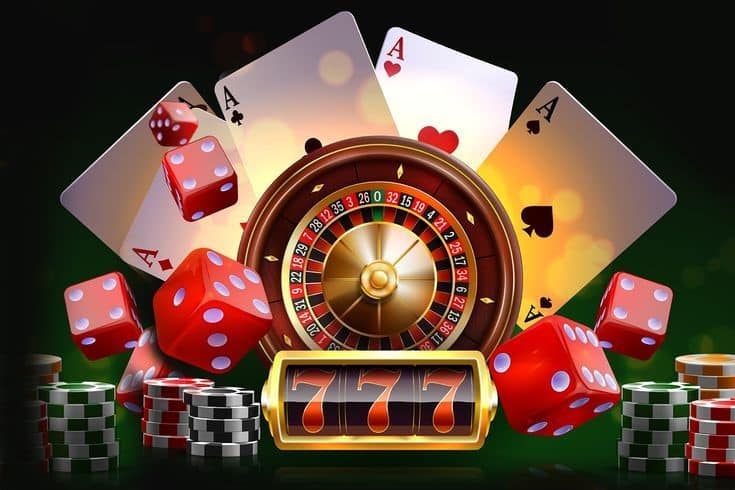
Slot gambling has a colorful history that spans over a century, captivating audiences worldwide with its colorful reels and tempting jackpots. From its modest origins in the final decades of the 19th century to the high-tech machines found in casinos today, the evolution of slot machines is a fascinating journey that reflects broader changes in entertainment and technology.
As we acknowledge the key moments in this dynamic gaming sphere, it is important to recognize how slot gambling has changed not only the gaming industry but also the cultural landscape of leisure activities. With each decade, innovations have reshaped players’ experiences, introducing new themes, mechanics, and ways to win. Join us as we investigate the important developments that have molded slot gambling and keep on influence its future.
The Birth of Slot Machines
The birth of slot machines can be traced to the late 19th century, with the creation of the initial mechanical slot machine. In 1887, a mechanic named Charles Fey, who worked in San Francisco, crafted the Liberty Bell machine, which featured three spinning spinning reels and five iconic symbols: hearts, diamonds, spades, horseshoes, and the Liberty Bell itself.: hearts, diamonds, spades, horseshoes, and the Liberty Bell itself. This groundbreaking innovative creation brought forth the concept of a simple and easily accessible game that offered gamblers the chance for winning monetary prizes setting the groundwork for evolution of gaming machines.
With its Liberty Bell gained popularity many other inventors sought develop their own versions of slot machines In the early 1900s slot gambling began spreading across the US, while new developments surfaced. The machines began to show more symbols while also presenting the concept of automated payout systems, thus making these machines more enticing for players. This era signified the transition from mechanical devices into more sophisticated gaming choices, establishing a foundation for what’s to come in slots
The rise of the slot machines also coincided with changes to gambling regulations as well as shifts in societal views regarding gambling. Initially viewed with skepticism and doubt, these machines eventually became widely recognized in pubs and taverns, helping them grow in fame. With the progression of technology, electric-powered machines appeared in the 1960s introducing novel features along with a vibrant visual appeal This evolution marked an essential turning point in the expansion of the slot gambling scene, clearing the path for today’s modern slot machines which still captivate players in the present day.
Development of Tech in Slots
The advancement of technology in slot machines has substantially altered the environment of gambling on slots. The process started with physical slot machines, often referred to as one-armed machines, which used a simple handle to engage a collection of turning reels. ALOHATOTO These early machines relied on physical mechanics, with players scoring by coinciding symbols across a payline. The basic yet intriguing design laid the basis for the appeal with gambling on slots that continues to this day.
As tech progressed, digital slots appeared, utilizing basic computers that enabled for better graphics and sounds. This innovation not only improved the visual charm of the machines but also allowed for more intricate gameplay features, such as multiple pay lines and special features. Digital slots quickly turned into a staple in gambling houses, drawing in players with their appealing themes and immersive experiences. The transition to electronic slots marked a pivotal moment in gambling on slots, making games more interactive than ever.
The launch of internet casinos further changed the industry, giving rise to digital slots that could be accessed from any place with an internet connection. Internet sites have adopted advanced technology, including random number generators and sophisticated graphics, to replicate the excitement of traditional slots. This digital revolution has opened up new avenues for gamblers, allowing them to enjoy the thrill of slot gambling from the comfort of their homes, greatly expanding the audience and acceptance of slots around the world.
Societal Impact of Slot Gaming
Machine gaming has woven itself into the fabric of mainstream culture, frequently shown in movies, TV programs, and books. These devices are frequently associated with the excitement of victory and the excitement of the casino environment. Famous films like The Hangover and TV shows such as High Roller highlight the allure and drama surrounding gambling devices, solidifying their position as symbols of risk and reward. This cultural depiction has added to their view as both a type of entertainment and a means to realize monetary success.
The availability of machine gaming has additionally played a significant role in forming social interactions and community events. Numerous people visit gambling venues not only to gamble but to engage socially, marking wins and commiserating over defeats. This communal element has transformed slot machines into a collective experience, leading to the formation of friendships and networks built around a shared interest in gaming. Whether in physical gaming houses or digital sites, the community aspect of slot gaming fosters a sense of community among players.
Additionally, the evolution of machine gambling mirrors broader social shifts and tech progress. From classic physical devices to sophisticated digital games, the genre has continually evolved to satisfy the preferences of diverse players. The fusion of themes from popular culture, songs, and films into slot games has made them relatable and enticing to a broad spectrum of audiences. As slot gaming persists to develop, its cultural significance is robust, shaping trends and highlighting the convergence of gambling, entertainment, and society.
